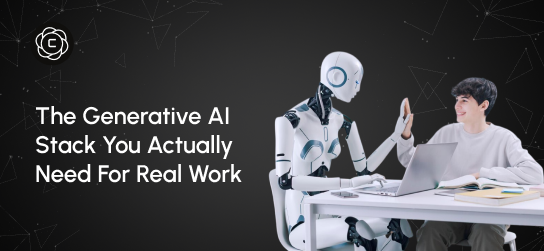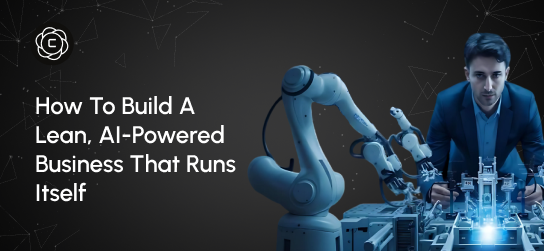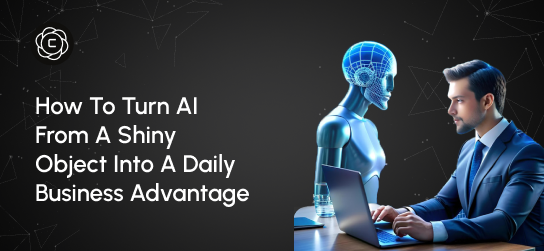Learning Center
Master AI creativity with our comprehensive guides, tutorials, and expert insights. From beginner basics to advanced techniques.
How Stanford Teaches AI-Powered Creativity in Just 13 Minutes
Introduction
Still think AI can't be creative? You're probably asking it the wrong questions.
Stanford's Jeremy Utley doesn't just teach innovation—he lives it. And in just 13 minutes, he shows how anyone, even without a technical background, can use generative AI to produce breakthrough ideas.
1. Stop Treating AI Like a Gadget, Start Treating It Like a Collaborator
Most people treat AI like a calculator. Input something simple. Get something obvious back. But Utley flips that thinking.
The real magic, he says, happens when you treat AI like a collaborator, not a vending machine. You guide it. Shape it. Push it.
"Most people barely scratch the surface of what AI can actually do."
The shift isn't in the tech. It's in how you work with it. Creativity, like any partnership, is built through back-and-forth.
2. Structure Breeds Breakthroughs: Use Role-Based Prompts
Utley breaks his process down to a simple framework: RTCO
- (R) Role → Define who the AI is
- (T) Task → Specify what you need
- (C) Context → Provide the situation
- (O) Output → Describe the format
Here's What That Looks Like in Practice:
Role: "Act as my creative partner."
Task: "Brainstorm 10 fresh ad ideas for your app, fast and focused."
Context: "For a Gen Z audience who values privacy and speed."
Output: "List format, with short, punchy hooks."
This structure gives AI something to lean into. It's not magic—it's clarity. The result? Ideas that feel more human, more useful, and way closer to the mark.
3. Real-World Wins > Hypotheticals
This isn't just theory. One ranger used a single AI prompt to cut days of paperwork—and saved 7,000 workdays across the entire Park Service.
The result? 7,000 workdays saved across the organization.
This isn't about doing more tasks. It's about clearing the path for higher-value thinking. That's what creativity looks like when it's operationalized.
4. Discipline Drives Originality
Creativity isn't luck—it's momentum built through practice. It's about building the conditions for lightning to strike more often.
Utley emphasizes input curation: the quality of your ideas depends on the clarity of what you feed the model. And once you get a "decent" output? That's just the starting line.
Pushing for better—that's where the real edge comes in.
5. Bring It to Life with Crompt AI
Now, how do you take all this and actually apply it to your work?
Here's how I run the same system using the Crompt AI Stack:
Crompt AI Content Writer: Use your RTCO prompt to generate a sharp first draft—script, blog, email, you name it.
Crompt AI Improve Text: Tweak tone, clean up clarity, and refine the rhythm until it sounds like you.
Crompt AI Ad Copy Generator: Spin out multiple hook variations in seconds, perfect for testing and iteration.
Available on iOS and Android.
6. The 13-Minute Creative Sprint
Want to try Utley's method without overthinking it? Run this sprint:
- Set a 13-minute timer
- Use a structured RTCO prompt in Crompt Content Writer
- Refine it for 2–3 minutes using Improve Text
- Generate ad variations using the Ad Copy Generator
- Pick your favorite, tweak it, and repeat
Don't over-edit. Don't aim for perfect. Just move. Speed plus structure is what unlocks momentum.
Next Steps
Creativity isn't a personality trait. It's a process.
When you treat AI like a thinking partner, give it clear roles, and commit to short, focused sprints—the results are surprising, fast, and genuinely useful.
You don't need to write code or design interfaces—just know what you want and how to ask for it.
Stanford proved it's possible. Now it's your turn.
Table of Content
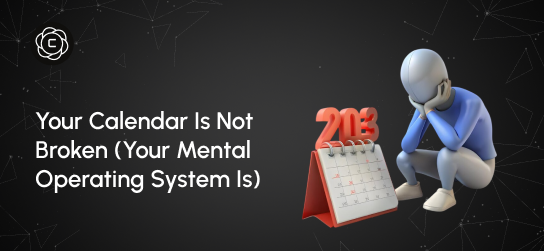
Your Calendar Is Not Broken (Your Mental Operating System Is)
Last month, I watched a founder spend three hours reorganizing his calendar app for the fourth time this year. Different colors, new categories, smarter blocking strategies. By week two, he was back to the same chaotic pattern: overcommitted, constantly running late, and feeling like his day controlled him instead of the other way around. The problem wasn't his calendar. It was the mental operating system running underneath it. Calendar issues aren’t about tools; they’re about how you think about time. They download new apps, try productivity methods, and wonder why nothing sticks. Meanwhile, the real issue sits in how their brain processes time, priorities, and commitments.
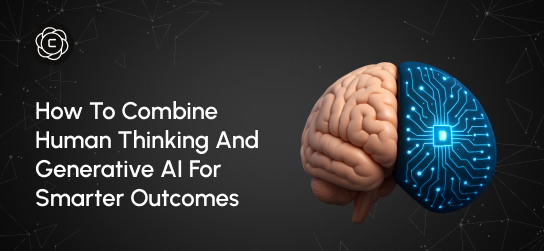
How to Combine Human Thinking and Generative AI for Smarter Outcomes
Last Tuesday, I watched two product managers go head-to-head on the same challenge. Same tools. Same data. Same deadline. But the way they used AI couldn’t have been more different and the results made that difference unmistakable. One delivered a generic solution, familiar and easily replicated. The other crafted a proposal that felt thoughtful, grounded, and strategically distinct. Their CEO approved it for implementation within minutes. The gap wasn’t technical skill or AI proficiency. It was their thinking architecture, the way they framed the problem, used AI to explore, and layered in human context to guide the output.
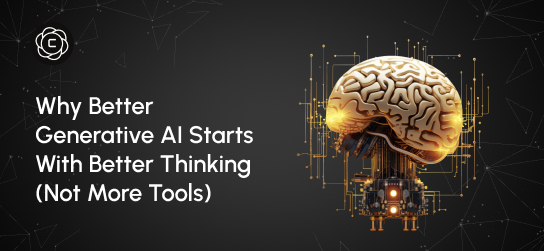
Why Better Generative AI Starts With Better Thinking (Not More Tools)
Four months ago, I watched a marketing director spend $400 on AI subscriptions only to produce the same mediocre content she'd always created. Her problem wasn't the tools. It was her approach. This scenario plays out everywhere. Professionals accumulate AI subscriptions like digital trophies, believing more tools equal better results. They're missing the fundamental truth: generative AI amplifies your thinking, not replaces it. The best AI users I know don't have the most tools. They have the clearest thinking processes.
Stay Updated
Get the latest AI insights, tutorials, and feature updates delivered to your inbox.

